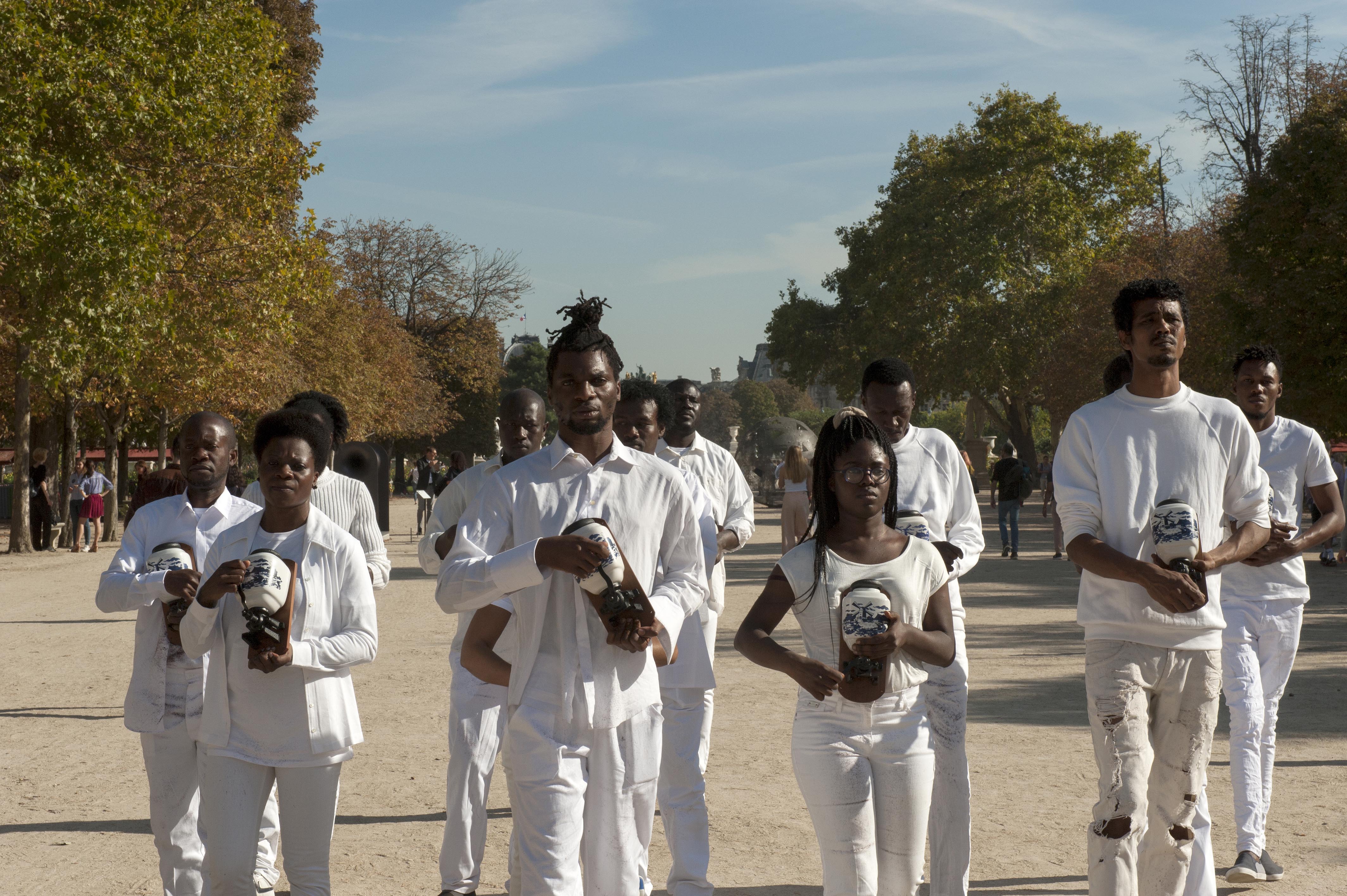
Paulo Nazareth's performance
ARCHIVE
Free, without reservation
It stages thirteen participants, dressed in white, whose personal histories have been marked by immigration. This procession will march through the neighbourhood of the Bourse de Commerce. The performers continually put into action manual coffee mills. The movement of their arms is a metaphor for the world’s mechanisms, the forces at work, and the labour of the immigrants who have contributed to the construction and prosperity of our societies. As the milled coffee falls to the ground, its leaves behind a dark trace and an olfactory thread that the wind disperses. Its fragrance stimulates a collective, affective memory, which will never drown out the tragic odours of history. Paulo Nazareth updates them in this performance. Through the evocation of coffee farming — dominated for centuries by colonists, based on slavery— he evokes the memory of being a slave and exposes the iron rod which is still being imposed today by the West in the South, in particular through the overexploitation of resources.
In the context of the Bourse de Commerce and the iconography of large painted murals, essentially anchored in this colonial and imperialist culture — at once studied and set at a distance by the new museum —, this performance chimes with the mercantile past of the site, as a space for exchanges and speculation on raw food materials coming from the entire world, since the end of the 19th century.
With the participation of Ibrahim Adam, Ibrahim Dialo, Abdu Kadr Faye, Kingo, Yannos Majestikos, Tickson Mbuyi, Astrid Mvoula, Grace Nitoumbi, Cynthia Tell, D27, Perlige Sita. Under the direction of Fabrice Kalonji.
Paulo Nazareth
The work of Paulo Nazareth (born in 1977 in Governador Valadares in Brazil) is often made up of precise, simple gestures, which are then ramified more fully and resonate, the most often raising themes such as immigration, the effects of globalisation, colonialism, identity, or the questions of races and racialisation. It is built up through videos, photographs and found objects, but his most significant medium is doubtlessly the network of relations and encounters that the artist cultivates with the people he runs into, who are often invisible and lacking in status. His work has been presented by the Pinault Collection in the exhibitions “Dancing with Myself” in Essen in 2016, then at the Punta della Dogana in 2018 as well as at “Debout !” in Rennes in 2018.
The atelier of artists in exile
A unique structure in France, the mission of the atelier of artists in exile (aa‑e) is to identify exiled artists, from all origins, including every discipline, to help them in their administrative steps and artistic activities, and to offer work spaces and matchmaking with the professionals of art and culture. The structure benefits from 1,000m² at the heart of the capital, devoted to artistic practice. It receives the support of the city of Paris, the Ministry of Culture, the Ministry of Labour, the Onda and private foundations. The aa‑e won the Prix Culture pour la Paix 2018 from the foundations Jacques Chirac et Culture et Diversité and the Prix d’Excellence Professionnelle Womex 2020.